Zur Gestaltung eines lebendigen, sicheren und rentablen Indoor-Spielplatzes gehört mehr als nur die Auswahl von Spielgeräten. Sie müssen Ihren Markt, Ihr Budget, den Platz und die besonderen Entwicklungsbedürfnisse der Kinder verstehen. Dieser Leitfaden führt Sie durch jeden Schritt - von der Beurteilung des Wetters und der demografischen Gegebenheiten bis hin zur Auswahl von Themen, Grundrissen und Geräten -, damit Sie einen Indoor-Spielbereich schaffen können, der Kinder und ihre Eltern gleichermaßen begeistert.
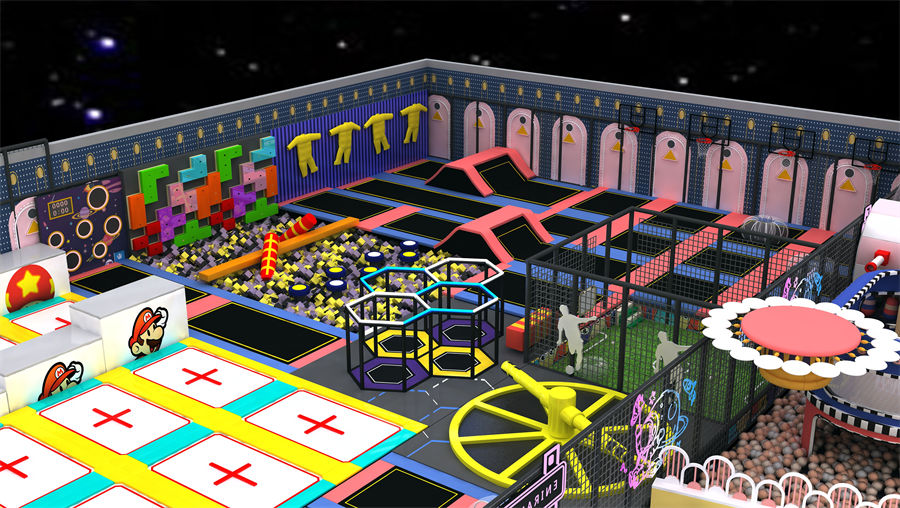
1. Is It the Right Time and Place?
Before you invest in equipment, research these four factors to ensure your indoor playground will succeed.
1.1 Weather Patterns
- Year-round Sun: In consistently warm climates, kids play outdoors most days, reducing demand for indoor play.
- Seasonal Climates: Regions with cold winters or rainy seasons increase parents’ need for an indoor option.
1.2 Local Demographics
- Family Density: Use census data or local surveys to confirm a high concentration of households with young children.
- Age Breakdown: Tailor your equipment to the dominant age group—toddlers (1–4), school-age (5–12), or mixed.
1.3 Community Events
- Birthday Parties & Rentals: Position your space as a go-to birthday venue, school field-trip location, or after-school activity hub.
- Special Needs & Classes: Offer sensory-friendly hours or parent-child fitness classes to broaden appeal.
1.4 Fitness & Competition
- Existing Options: Analyze competing fitness centers, trampoline parks, or outdoor playgrounds in the area.
- Unique Selling Point: Perhaps focus on educational play, ninja-style obstacle courses, or a soft-play toddler zone.
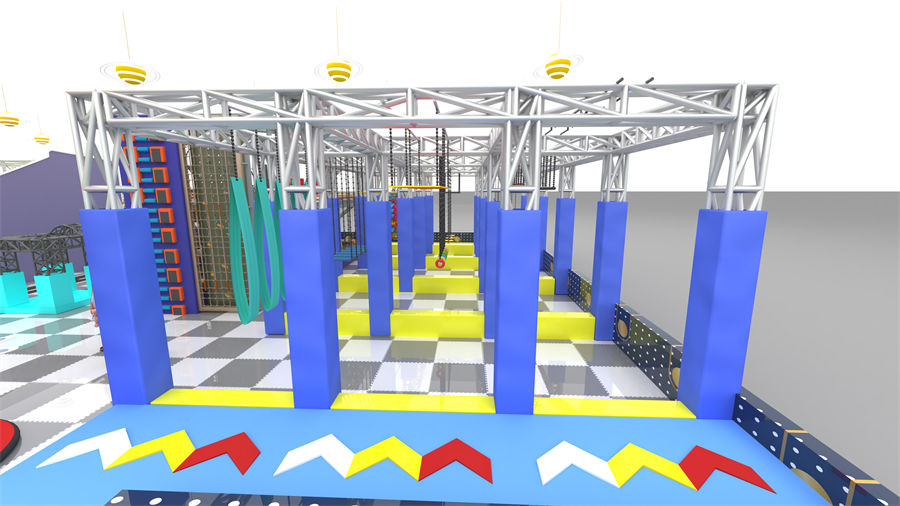
2. Budgeting & Funding
A solid budget safeguards against cost overruns and keeps your facility profitable from day one.
2.1 Cost-Per-Child Formula
- Industry Standard: Allocate roughly $1,000 per expected child in peak hour capacity.
- Example: For 100 children, plan for $100,000 in equipment costs.
2.2 Theme & Customization
- Themed Playsets: Custom graphics or character façades boost appeal but raise costs by 10–20%.
- Modular vs. Bespoke: Modular systems save money; bespoke layouts command a premium.
2.3 Soft Costs
- Permits & Insurance: Factor in local building permits, safety inspections, and liability coverage.
- Staffing & Training: Plan onboarding and ongoing safety training for attendants and supervisors.
2.4 Phased Implementation
- Phase 1: Core structures (climber, slides, ball pit).
- Phase 2 (6–12 months): Add-ons like inflatables, ninja courses, or VR game zones.

3. Space Planning & Layout
Your layout must balance safety, traffic flow, and age-appropriate zones.
3.1 Ceiling Height & Footprint
- Vertical Clearance: At least 12–16 ft for slides and climbing walls.
- Open Floor Plan: Keep 6–8 ft between major structures to avoid overcrowding.
3.2 Zoning by Age & Activity
| Zone | Age Group | Features |
|---|---|---|
| Toddler Corner | 1–4 yrs | Soft foam play, mini slides, sensory panels |
| School-Age Zone | 5–12 yrs | Multi-level climbers, obstacle courses |
| Chill & Read Nook | All ages | Beanbags, books, quiet games |
| Parent Lounge | Adult | Seating, Wi-Fi, café counter |
3.3 Sight Lines & Supervision
- Low Barriers: Use transparent netting or low walls so staff and parents can monitor every child.
- Central Check-In: Position the reception desk at the facility’s heart for easy oversight.
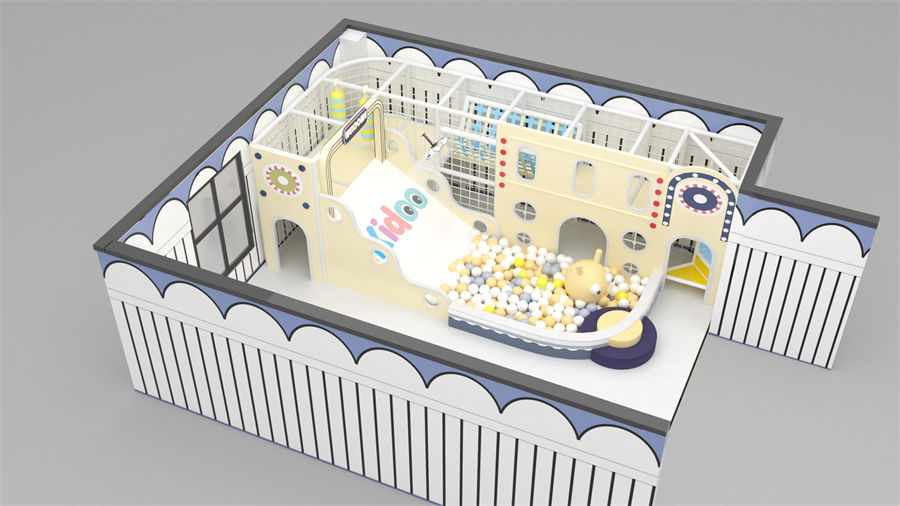
4. Defining Your Playground’s Purpose
Clarify how your space will be used to guide equipment selection and programming.
4.1 Safe Exploration
- Non-Slip Surfaces: Rubber tiles, engineered wood fiber, or foam mats.
- Rounded Edges: All fixtures must meet ASTM and CPSC safety standards.
4.2 Creative & Educational Play
- Role-Play Stations: Mini grocery stores, fire trucks, or doctor’s offices.
- STEM Panels: Simple puzzles, gears, or light-up panels to spark curiosity.
4.3 Social & Emotional Skills
- Team Challenges: Group obstacle courses or cooperative games.
- Quiet Refuges: Allow children to self-regulate when overwhelmed.
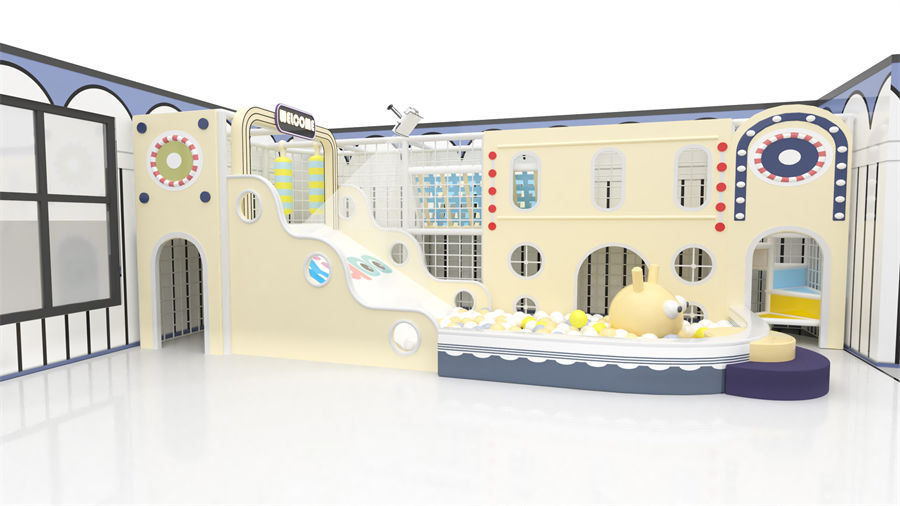
5. Choosing Themes & Aesthetics
A cohesive theme makes your playground memorable and Instagram-worthy.
5.1 Color Palette
- Bright & Contrasting: Use bold primary colors for younger zones.
- Neutral & Earthy: Tones like soft green or wood finishes for preschool or family lounges.
5.2 Branding Integration
- Logo Colors: Echo your logo’s hues in wall murals or play structures.
- Mascots & Icons: Turn your brand mascot into 3D silicone wall mounts or soft-sculpt foam.
5.3 Wall & Floor Graphics
- Wayfinding: Numbered zones or animal footprints leading from area to area.
- Themed Murals: Jungle, under-the-sea, space, or cityscapes to inspire pretend play.
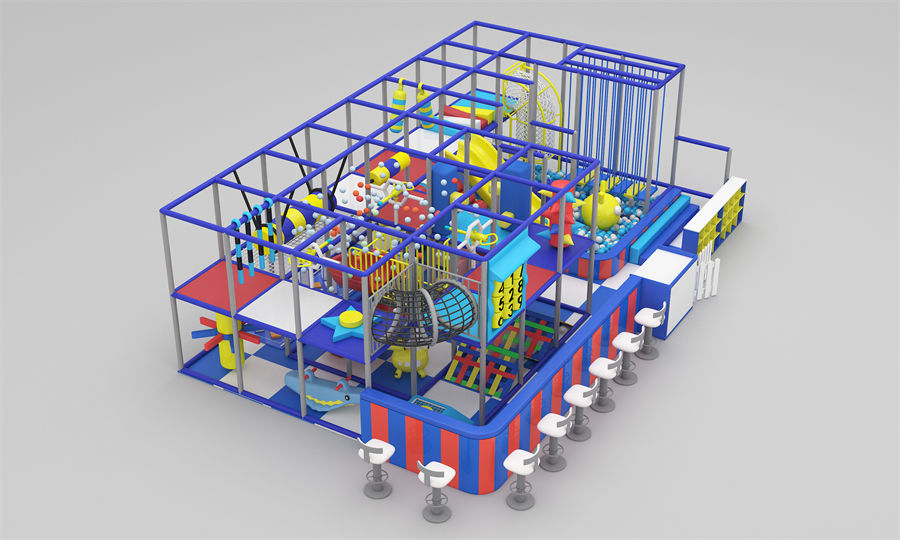
6. Essential Equipment by Age
Selecting the right play structures ensures every child is happy and engaged.
| Structure | Vorteile | Best For |
|---|---|---|
| Climbing Frames | Gross motor, coordination | School-age |
| Soft-Sculpted Foam Shapes | Safe exploration, sensory engagement | Kleinkinder |
| Foam Pit | Risk-free jumping, vestibular development | All ages |
| Trampoline Zone | Cardiovascular fitness, balance | School-age, Teens |
| Obstacle/Ninja Warrior | Agility, problem-solving | School-age, Teens |
| Role-Play Villages | Social skills, imaginative play | Preschool, School-age |
| Sensory Panels | Tactile, auditory stimulation | Kleinkinder |
| Interactive Game Walls | Cognitive challenges, group competition | School-age |
7. Safety & Maintenance
A clean, well-maintained playground keeps families coming back and minimizes liability.
7.1 Daily Checks
- Loose Parts: Inspect bolts, netting tension, and slides for cracks.
- Clean Surfaces: Wipe down high-touch areas with child-safe disinfectant.
7.2 Weekly Audits
- Floor Integrity: Ensure foam tiles or rubber surfacing remain flush and unwarped.
- Equipment Wear: Look for frayed ropes, faded paint, or splinters.
7.3 Quarterly Professional Inspections
- Structural Integrity: Hire a certified playground inspector to audit for hidden hazards.
- Safety Certification: Keep records of compliance with ASTM, CPSC, and local regulations.
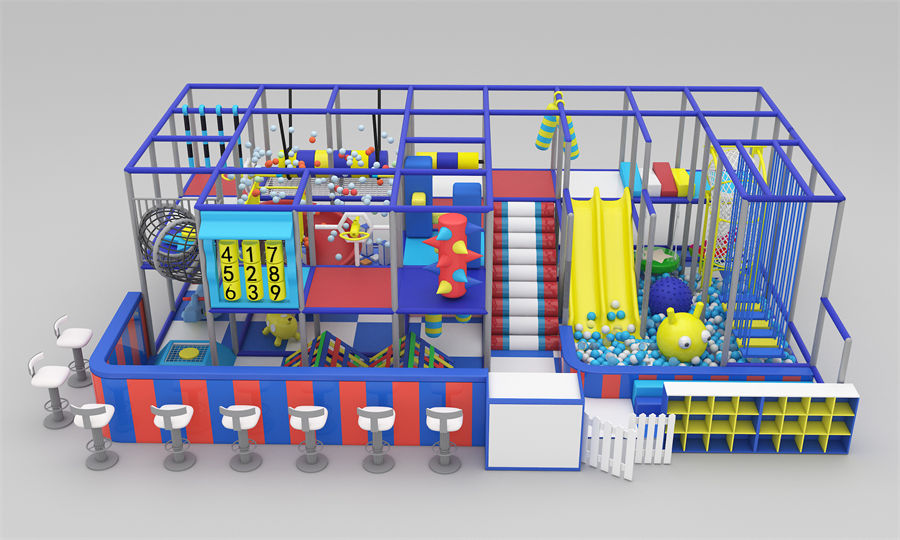
8. Staffing & Programming
Friendly, trained staff and engaging programs turn your playground into a thriving community hub.
8.1 Attendant Training
- First Aid & CPR: Mandatory certification for all frontline staff.
- Child Supervision: Strategies for crowd management and conflict resolution.
8.2 Scheduled Activities
- Storytime & Music Hour: Quiet zone events for toddlers and caregivers.
- Themed Challenges: Weekly “Ninja Nights” or “Pirate Adventures” to drive repeat visits.
8.3 Membership & Loyalty
- Monthly Passes: Unlimited access for frequent visitors.
- Birthday Packages: Tiered menu of party add-ons (pizza, goody bags, dedicated host).

9. Marketing Your Indoor Playground
Effective marketing ensures your indoor playground stays top-of-mind for families and event planners.
9.1 Digital Presence
- SEO-Optimized Website: Include keywords like “kids indoor playground near me,” “indoor play area.”
- Social Media: Share photos, family testimonials, and upcoming events on Instagram and Facebook.
9.2 Community Outreach
- School Partnerships: Offer after-school program discounts.
- Local Events: Sponsor community fairs or host charity play days.
9.3 Online Reviews & Listings
- Google My Business: Keep hours, photos, and contact info updated.
- Parenting Blogs & Directories: Encourage happy families to leave positive reviews.
Designing a kids’ indoor playground requires careful consideration of market demand, budget constraints, space planning, safety standards, and thematic elements. By zoning areas by age, selecting age-appropriate equipment, and maintaining rigorous safety checks, you’ll create an engaging, profitable destination that families will love—rain or shine.
Ready to start planning? Use this guide’s checklists and tips to bring your vision to life, and watch your indoor play center become the community’s favorite family spot!




